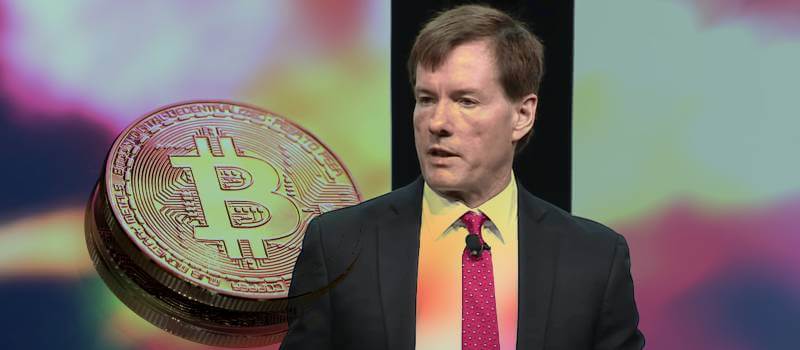Tanzania’s president is now calling for Bitcoin and crypto adoption
As per local newspaper The Citizen, Tanzania’s President Samia Sulhulu has asked the country’s Central Bank to start exploring the crypto sector, in what appears to be the latest move by a sovereign country to embrace cryptocurrency. The announcement by the President was made on June 14th, wherein she noted, “We have witnessed the emergence of a new journey through the Internet. My call to the Central Bank is that you should start working on that development. The central bank should be ready for the changes and not be caught unprepared.” While noting that throughout the East African region, no country has accepted or started making moves to adopt cryptocurrency; she called on the country’s central bank to be prepared for all eventualities. The announcement in Tanzania came shortly after moves in the countries of Mexico, Uruguay and Panama began adopting and legalizing cryptocurrency as a permanent means of exchange within their countries. Lawmakers in Mexico, led by Eduardo Murat Hinojosa, have recently begun to push for greater adoption of crypto, including expressing public support for its use. While the African continent is generally still behind in the race to recognize and adopt crypto, the region has recorded massive peer-to-peer Bitcoin trading for years. The sub-Saharan African country of Nigeria alone represents one of the highest volumes of bitcoin transactions globally, led only by the United States. That country recorded $8.5 million in Bitcoin transactions weekly and is followed by Kenya and Ghana at $3 million, $2 million, respectively, on the African continent.
South Africa recorded $1.6 million in weekly transactions. Tanzania currently sits at seventh with nearly $90,000 worth of trade over the past seven days.
Goldman Sachs announces Ethereum futures, institutional interest grows

Last week, Mathew McDermott, US multinational bank Goldman Sachs’s global head of digital assets, told Bloomberg that GS will begin to offer trading in Ethereum (ETH) futures. Roughly a year after denouncing cryptocurrencies as a non-asset class, the US multinational investment bank and financial services company opened up to Bitcoin (BTC), and is currently diving deeper into the Ethereum ecosystem. Futures are financial instruments which allow traders to bet on the price movements of underlying assets without the need to hold that asset. This is a means for investors to get involved with assets while avoiding the many issues related to custody and regulations. In May, the company restarted a trading desk to help their clients invest in publicly traded futures tied to Bitcoin, and it also led a $15 million investment into Coin Metrics, a cryptocurrency and blockchain data and analysis provider. According to McDermott, the bank plans to offer options and futures trading in Ethereum in the upcoming months. He told Bloomberg, “We’ve actually seen a lot of interest from clients who are eager to trade as they find these levels a slightly more palatable entry point.” McDermott was named head of the cryptocurrency efforts last year and since has been expanding his crypto team. “We see it as a cleansing exercise to reduce some of the leverage and the excess in the system, especially from a retail perspective. We are looking at a number of different companies that fit into our strategic direction.” Regarding their latest Ethereum driven plans, he added that his communication with clients reveals their crypto ambitions. “Despite the material price correction, we continue to see a significant amount of interest in this space. Institutional adoption will continue.” In last week’s survey of 850 institutions, Goldman Sachs discovered that almost 10% are trading crypto, and every 5th is interested in it. As more investors keep discovering lucrative opportunities within the vast crypto space, fewer put their money in centralized banks, causing them worries and, important to note, slowly spurring their evolution.
Swissborg’s anthony lesoismier shares investing gems for crypto investors

Investing for the long term, instead of using leverage on minute charts for short-term gains, is a much more prudent strategy for those looking to make it big in the crypto market. Since over ninety percent of all hopeful crypto traders end up losing money when trying to time the market, long-term horizons are the only way to go. Anthony Lesoismier, the chief security officer and co-founder of the crypto app Swissborg, swears by it. Last week, he sat with Alex Fazel of the crypto edutainment platform CryptoNites, in order to share market tips and tricks for those just beginning as traders and investors. His focus was how to be successful in the notoriously volatile crypto market. Lesoismier started out as a quantitative analyst for hedge funds back in 2008 and worked in sales trading for the next nine years or so. Lesoismier pointed out that the attitudes of the current culture were part of the reason why investors were failing to make the right choices for themselves, and many had not even considered the actual risks underlying their investments. “I think we have a thinking system that does not encourage people to think by themselves. Let me give you an example: If you go to see a professional investor, he will tell you that you must diversify. So, you must take this much money to invest, and you should take a bit of that and a bit of that. Even if you don’t believe in it, you should invest. For example, if you have 100k to invest, you should buy 80% of US Treasury bonds, 10% of Tesla, and 10% of the S&P. When we calibrate this kind of portfolio, we can fairly say that you’re not going to lose more than 10k, 10% of your portfolio. But if you don’t believe in it, the risk address return would not be good again.”
Lesoismier further explored his point by stating, “So when you invest in Bitcoin at $1,000, visualize that if it goes back to zero, then your risk is $1,000. But what is the probability that it goes above $2,000? What is the probability then of (it) going to $10,000 and (your) making $9,000? When you think about it, there are few assets with this property where you can get it, (and it) can go much higher, or it goes down, right? So now Bitcoin is at 30k, what’s the probability that it goes to zero or it rises above 60k? And of course, the more major an asset becomes, the less symmetry you will find. One of the examples: If you look at the Bitcoin charts, you can see who the public movement is and all these things, but maybe you can learn from the future market. Between the spot market and the futures market, when the spread is really high, it means that there is a huge demand on buying the future market, which means that people are rushing to buy the market, (and) they don’t care about the price, they’re ready to pay a premium,” Lesoismier was herein suggesting how investors could use such data to determine which direction a market trend could end up forming.
You can soon bet on Bitcoin’s dominance against other cryptos

Binance will soon allow traders to bet on Bitcoin’s increasing or decreasing share of the crypto market by offering a new product, the crypto exchange said in a release late last week. Offered under the ‘BTCDOM’ ticker, the product is a cryptocurrency price index that reflects the market dominance performance of Bitcoin by comparing the asset to the top 20 cryptocurrencies on Binance by market capitalization (excluding stablecoins). Binance said in a post at the end of last week, “The BTCDOM Index is a metric that traders can use to quickly get a sense of Bitcoin’s value relative to that of the broader cryptocurrency market.” Bitcoin’s dominance is a measure of the asset’s market share relative to other cryptocurrencies. Bitcoin accounted for as high as 93% of the entire crypto market in 2013, and then fell to its lowest – 33% in January 2018. Recovering to over 69% in 2020, it has since fallen to 43% as of last week. Many charts compare Bitcoin to all other cryptocurrencies, while BTCDOM is relative to just 20 of them. This will cause figures to vary, and so one must be aware of perspective when comparing data. As per Binance, the BTCDOM Index will provide insights into the market and can be used as a tool to speculate on Bitcoin’s relative strength against other cryptocurrencies. BTCDOM will be a ‘perpetual’ contract, which means that as a futures product, it will carry no expiration date; and it will also be Tether margin, with USDT as collateral. Traders will have access to 25x leverage. This will allow traders to make a macro bet on the crypto market. For instance, if altcoins gain market share relative to Bitcoin, the index will lose value. Similarly, if altcoins lose market share relative to Bitcoin, the index will gain value and traders will be able to squeeze out a profit and/or hedge their bets. Binance explained, however, that the BTCDOM index is unlikely to alternate between gaining value and losing value. “In certain conditions, if Bitcoin falls in price, but the rest of the cryptocurrency market falls at a similar rate, then Bitcoin dominance is likely to remain the same,” the post added.
Bitcoin (BTC) miners in China plot plans to ‘go green’

The local outlet CGTN said at the end of last week that some of China’s storied Bitcoin miners are planning to use more renewable energy sources to power their expansive mining rigs. This came in reaction to Chinese officials saying last month that they plan on cracking down on mining farms due to their high-power usage and large environmental impact. Illegal coal extraction to power mining farms in some regions was viewed as one of the problems because this ran against China’s continual efforts to go green and become carbon neutral. Some miners are looking to bounce back now. Arthur Lee, CEO of SAI, a Bitcoin mining company, said in a statement, “We are trying to collaborate with power generation companies to know the status of excess energy generation, and they can be connected to bitcoin mining to prevent the energy wastage.” For those unfamiliar, Bitcoin mining is a process that uses a vast computing system which solves millions of complex calculations each second to validate transactions on the Bitcoin network. This requires massive amounts of energy for the maintenance, cooling, and running of the machines. Many countries have come down hard on this process, causing the exodus of influential miners from those countries to other regions, with Serbia, Texas, and many Central Asian countries emerging as top contenders. Also, mining has given rise to the usage of unconventional energy sources, such as volcanoes and cow manure. Lee went on to explain that “Bitcoin miners thrived in China in the past because of the cheap electricity, easy availability of land, affordable labor, and safety. But things have changed for us in recent years because of the recent regulatory changes. The cheapest energy is where the energy is idle,” referring to electricity generated by solar and wind farms which aren’t fully utilized since they are not typically connected to a grid. A significant percentage of China’s solar and wind energy potential are based in Xinjiang, Inner Mongolia, and Gansu. Some academics say Bitcoin mining has helped China’s inner economy and should not be driven out at all. Liu Changyong, professor at Chongqing Technology and Business University, stated, “We should not forget that Bitcoin mining generated huge tax revenue and created job opportunities, helping the country’s fight against poverty.” Instead of moving away from communal goals, he added that policymakers, power companies, and Bitcoin miners should come together to resolve the issue and grow the industry. “[It’s] a win-win deal for everyone,” Changyong added. But one is left wondering, will the Chinese government listen to such prudent guidance, or are they too busy creating new strains of virus?
Holder of 92,000 BTC explains why energy concerns aren’t Bitcoin’s biggest threat

Michael Saylor discussed what he perceives as the biggest risk to Bitcoin, and it had nothing to do with ESG (environmental, social, or governing) factors. ESG refers to a set of standards that investors use to determine how a particular company stacks up in terms of social responsibility. For instance, environmental criteria look at how a company performs in relation to ecological concerns. Social criteria will examine how a company manages dealings with employees, suppliers, customers, and communities. Finally, governance, or governing factors, refers to how an entity handles its leadership, audits, internal controls, and shareholder rights. Ever since Elon Musk spearheaded environmental concerns around Bitcoin’s proof-of-work mining practices, ESG factors and templates have been thrust onto Bitcoin’s asset model. This article explores why the ESG concept is better suited for use in relation to a public company, and not crypto. While there are some overlaps, publicly traded companies buying, selling, and holding BTC should not explore how ESG relates to Bitcoin, which is an asset class and does not follow the codes of conduct for a business model. It should go without saying that ESG activism is not a threat to Bitcoin.
The first open Bitcoin Mining Council (BMC) meeting took place earlier last week. The event featured guest speakers discussing industry trends, as well as a Q&A segment. When Michael Saylor was asked if there is a growing concern regarding Bitcoin due to ESG factors, he explained that this was low on the list of threats to Bitcoin. “I don’t actually think that the threat to Bitcoin is gonna be ESG activism directed at publicly-traded companies. I don’t think that’s the worry,” he said. He dismissed “social” on the grounds that BTC is empowering. In terms of “governance,” he made the point that there is no Bitcoin leadership team. He then took the opportunity to say, “We know, with regard to social goals, Bitcoin is empowerment to eight billion people on the planet of property rights. And with regard to governance, there is no governance because there is no board and there is no CEO and no management team of Bitcoin. You couldn’t govern it if you wanted to.” However, when it came to “environment,” Saylor was less certain of low impact upon Bitcoin. He admitted there was an environmental threat coming from a media-driven narrative that enjoys turning negative any chance it gets when it comes to anything with a certain popular appeal. Thus, in turn, can create a political drive which would by necessity force legislative action from a nation-state. But then Saylor rounded off by saying the biggest risk to Bitcoin is ignorance, driven by the mainstream media, which wants its own way so it can feel self-assured in its own empowerment. He concluded that it was not the direct impact of the environmentally sustainable factors themselves that might hurt Bitcoin in the future, but the ignorant and propaganda-driven mainstream media, especially the one in the U.S.
Goals of the BMC include promoting transparency, notating environmentally friendly energy sources used for proof of work, and better education around BTC mining, in general. Saylor said he intends to use the BMC platform to take control of the Bitcoin narrative from “uninformed parties.”
The post Digital Asset Insights #21 appeared first on JP Fund Services.







































